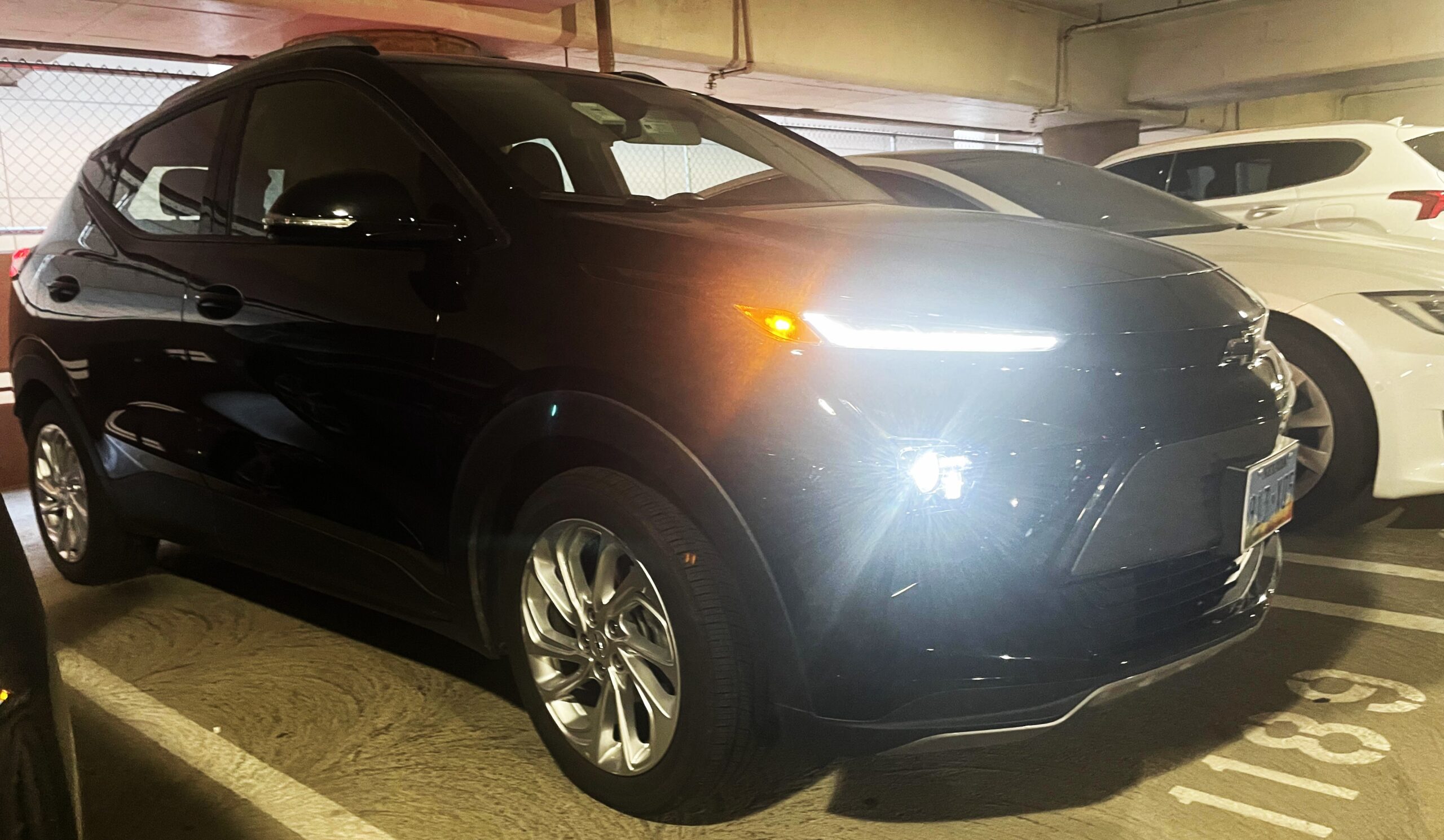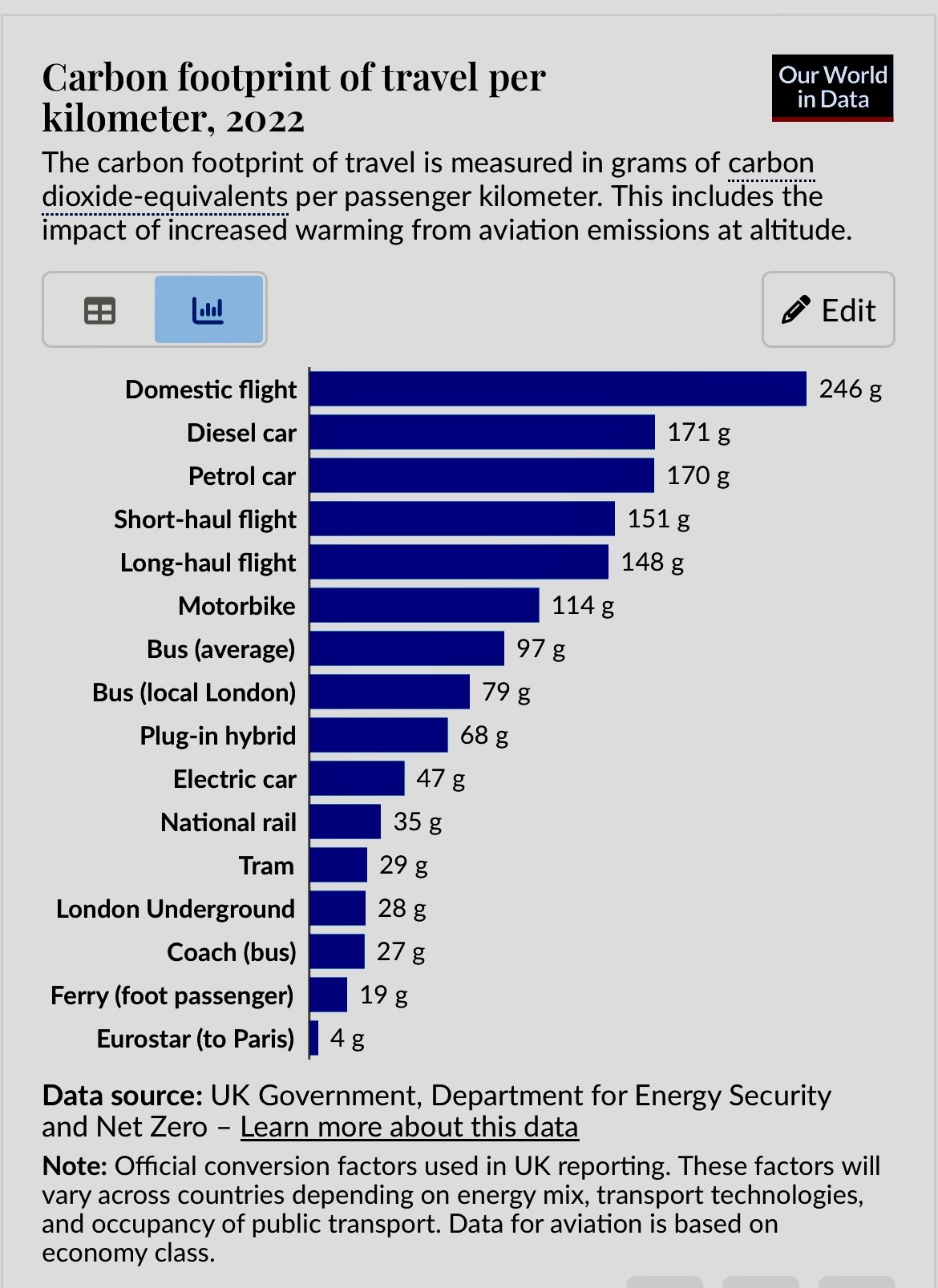Sign up for daily news updates from CleanTechnica on email. Or follow us on Google News!
One of my life’s ongoing inner ruminations is considering options for transportation. (The welcome influence of CleanTechnica.) If walking is a timely option, I prefer to do it. For the simple reason that I always—I mean always—feel better after going for a walk. Walking restores vitality that is lost after spending too much time sitting down. The same is true when riding a bicycle. Next up are trains, which I wish were entirely electric.
U.S. metros are rarely comparable to those in Europe. Raleigh Union Station in North Carolina compares quite well — even better with customer service. It is a clean, spacious, lovely station. It’s been a while for me in the U.S., but I am actually on a train as I’m writing this.
This won’t be one of CleanTechnica’s most popular articles. Walking, bicycle paths, and mass transit don’t stand out like a bright, shiny new electric car with untold range possibilities—except to a few of us, and many parts of the world outside of the U.S. Still, there is no doubt that electric mass transit could do so much more to lower greenhouse gases and carbon emissions and help one’s pocketbooks.
Train vs. Car
Since Hurricane Helene, my friends and family have all offered me shelter and visits to stave off the effects of the water infrastructure problems in Asheville. So, traveling I am, visiting dear friends and trying to keep a small footprint of fossil fuels. So far, I can contrast this $43 train journey between Raleigh and Charlotte, North Carolina, to the next lap of my nomadic hurricane travel. This part on a train stands out as one that is completely stressless compared to the 4 days I spent in and out of 6-7 lane traffic in a marvelous Bolt EUV. The Bolt drives quite well. It’s the traffic I deplore.
We were searching for low-footprint alternatives because driving was necessary to visit my dear friend in the Sedona desert. Determined to keep as low emissions as possible, my companion chose a $600+ EV rental ($160/day). It was worth it to the both of us, and then the 3 of us. The Bolt EUV is marvelous to drive. Yet, managing the insane traffic of car culture in and out of a large city is too much stress for a person—any person.
Trains
First, I want to say to Amtrak in Charlotte and Raleigh that the customer service at both train stations is well above average. I had a few concerns and talked extensively with people at both stations who earnestly tried to help resolve my issues quickly, and did. People at Amtrak and on the train valued their customer service positions. They made everyone feel welcome and cared for.
Inside the Raleigh train station, the atmosphere is pleasant. Clean. Bright.
Environmental Defense cuts to the chase: “Public transit is at the nexus….” It is a solution to the rising cost of living. It helps us reduce carbon emissions. It is the most powerful method of tackling traffic congestion. It is the lifeblood of economic growth in our towns and cities. It enables building the kind of dense, sustainable, and cost-efficient housing supply we need to tackle “the housing crisis.”

I enjoyed the opportunity to walk outside to board the train after my roomy rest at Raleigh Union Station. While we waited for the train to pull up on the platform, a few passengers danced outside to the upbeat music. When I got on board, I discovered that it was more comfortable and more roomy than an airplane, which smells like diesel and often gives me headaches.
Yet, the smells of fossil fuels infiltrate the lovely ambiance of the train. “80% [of the] nitrogen in our bodies indirectly comes from the chemical signature of this fossil sunlight that we are mining. So we are different than our ancestors. They were made of sunlight; we are made of fossil fuels.”
I wish I was wearing an N-95 mask. Electric trains are needed everywhere.
The train, like a pleasant Waymo ride, provided a stress-free and risk-free alternative to the danger of driving in traffic. This is why I prefer it over driving, especially a gas-powered vehicle.

For the next lap, I was successful in renting a Chevy Bolt EUV. The experience of renting an EV was efficient and exciting. Still, when comparing prices, walking and rail are far more reasonable for a single traveler. Our EV rental cost was $160 a day in Arizona. It favored the companionship of two more passengers in the vehicle—in that sense, it was comparable in cost, since my train cost $43.
Arizona has a 75 mph speed limit in several areas, likely due to the desert’s seemingly unending expanses. What happened to the 55 mph speed restriction? That impressed me as a smart policy during the energy crisis of the 1970s*, and has been reinforced as such from driving EVs and trying to maximize range. It makes a nice difference in the face of diminishing range to drive a consistent 55 mph rather than 10 mph or 20 mph faster. (*There was a national speed limit of 55 miles per hour that was implemented in the United States during the 1973 oil crisis as a measure to conserve fuel by forcing drivers to travel at slower speeds, which are much more fuel-efficient.)
I was often pressured to drive at 65 mph due to traffic peer pressure while traveling. Or 70 mph in 6–7 lanes of dangerous traffic near Phoenix. Fortunately, our Sedona accommodations provided us with an EV charger. It was a significant convenience. I spent about $10 on fuel on my 600-mile trip.


So, that is my journey, but what is the best environmentally conscious way to travel, whether locally, regionally, or worldwide? Our World in Data has an answer:
“In this chart, we see the comparison of travel modes by their carbon footprint. These are measured by the amount of greenhouse gases emitted per person to travel one kilometer.”

“Walk, bike, or take the train for the lowest footprint
“Over short to medium distances, walking or cycling is nearly always the lowest carbon way to travel. While they’re not in the chart, the carbon footprint of cycling one kilometer is usually in the range of 16 to 50 grams CO2eq per km, depending on how efficiently you cycle and what you eat.
“Using a bike instead of a car for short trips would reduce travel emissions by around 75%.
“Public transport is usually your best option if you can’t walk or cycle. Trains are particularly low-carbon ways to travel. Taking a train instead of a car for medium-length distances would reduce emissions by around 80%. Using a train instead of a domestic flight would reduce your emissions by around 86%.
“In fact, if you took the Eurostar in France instead of a short-haul flight, you’d cut your journey’s footprint by around 97%.
“What if you can’t walk or cycle and don’t have access to public transport?
“If none of the above are options, what can you do?
“Driving an electric vehicle (EV) is your best mode of private transport. It emits less than a petrol or diesel car, even in countries with a fairly high-carbon electricity mix. Of course, powering it from a low-carbon grid offers the greatest benefits.
“The chart above only considers emissions of EVs during their use phase — when you’re driving. It doesn’t include emissions from car manufacturing. There have been concerns that when we account for the energy needed to produce the battery, an EV is actually worse for the climate than a petrol car. This is not true—while an EV does have higher emissions during its production, it quickly ‘pays back’ once you start driving it.
“The next best is a plug-in hybrid car.
“Then, whether you take a petrol car or fly depends on the distance. Flying has a higher carbon footprint for journeys less than 1000 kilometers than a medium-sized car. For longer journeys, flying would actually have a slightly lower carbon footprint per kilometer than driving alone over the same distance.
“Let’s say you were to drive from Edinburgh to London, a distance of around 500 kilometers. You’d emit nearly 85 kilograms CO2eq. If you were to fly, this would be 123 kilograms — an increase of almost one-third.”
Epilog
There are moments when I wish I didn’t realize how deeply fossil fuels and diseases are bound. Fossil fuels promote cancer. Even if we can leave them completely, it still will not be as fast as CleanTechnica prefers. It’s awful enough to smell without knowing these things; it can produce headaches, nausea, and other side effects. Nonetheless, knowing and breathing bring physical dangers, and mental consequences.

Chip in a few dollars a month to help support independent cleantech coverage that helps to accelerate the cleantech revolution!
Have a tip for CleanTechnica? Want to advertise? Want to suggest a guest for our CleanTech Talk podcast? Contact us here.
Sign up for our daily newsletter for 15 new cleantech stories a day. Or sign up for our weekly one if daily is too frequent.
CleanTechnica uses affiliate links. See our policy here.
CleanTechnica’s Comment Policy






